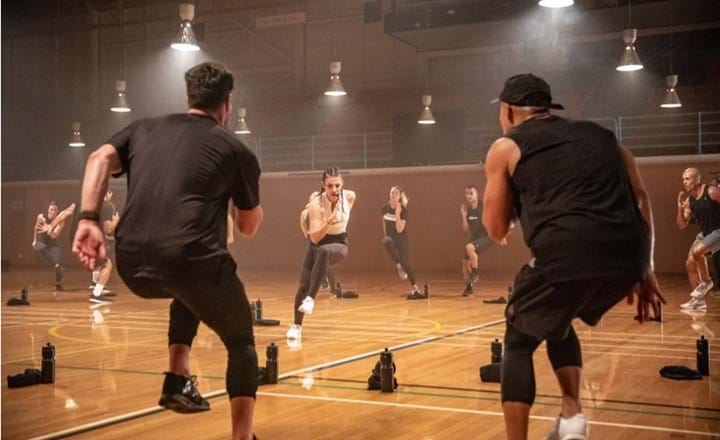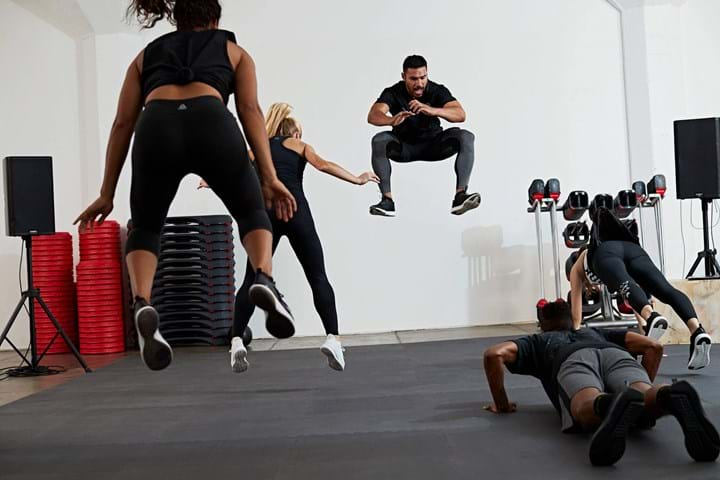
Driven by its surging popularity among consumers, HIIT has become a staple of the club timetable, with 62% of all global fitness facilities now offering some form of High-Intensity Interval Training.
The promise of impressive results, fast, has made HIIT the go-to workout for time-poor Millennials and Gen Z – dubbed Generation Active – who now represent 80% of all gymgoers. It’s also made high-class HIIT offerings a sure-fire way for clubs to attract and retain younger members.
It comes as no surprise then, that clubs, driven by the boutique boom, have been quick to affix the HIIT tag to a whole host of their classes.
But amid the frenzy for all-things HIIT, has society lost sight of what it really is? Does the average consumer know that the 60-minute HIIT-themed bootcamp they love at their favourite boutique is, in fact, a medical impossibility? And what are the dangers for clubs who use the HIIT name in vain?
Let’s look through the facts and explore how can clubs can harness the HIIT craze while also keeping their credibility.

Cutting through the bullsHIIT
A solid place to start would be defining what HIIT actually is. According to Dr Jinger Gotschall, an Associate Professor of Kinesiology at Penn State University: “High-Intensity Interval Training is where your heart rate is above 85% for two-thirds of the total duration. Typically, 30-minutes is the maximum amount of time that individuals can perform HIIT with quality.”
Working intensely hard for a short period of time is what triggers the EPOC (excess post-exercise oxygen consumption) response, which boosts metabolic rate and enables us to burn more calories for hours after a workout. HIIT has been found to be far the most effective workout for stimulating the EPOC-effect, which has helped to cement its status as the go-to workout for burning fat.
Other forms of training can also elicit the EPOC-effect, but HIIT’s star power here is perhaps one of the reasons clubs have been so keen to include it in their workout descriptions and marketing.
However, with 30-minutes being the upper limit to which individuals can safely carry out HIIT, it’s fair to say that a bootcamp-style class stretching 45-minutes or up to an hour actually represents a different form of Interval Training to HIIT.
But given that these types of workouts have helped to drive growth in our sector and usher fitness into the mainstream, does it really matter whether a workout is strictly HIIT or not? And do members really care?
A dangerous game
The reason HIIT is such an effective training method is its ability to ‘shock’ our bodies into action and drive rapid transformations, but too much HIIT can actually do more harm than good.
Landmark research presented by Dr Gottschall at the 2018 American College of Sports Medicine conference revealed that exercisers who spend more than 40-minutes a week with their heart rate above 90% max (as it is during the majority of a HIIT workout) face diminishing returns and a greater risk of injury.
The findings show that the sweet spot of HIIT lies at 30-40 minutes per week with the heart rate above 90% max – the equivalent to two 30-minute classes per week. They also highlight the importance of clearly defining what is and isn’t a HIIT class. This is to protect participants from the risks of overtraining, as well as ensuring that the programming itself keeps them within the target heart-rate range for the right length of time.
The research chimes with another recent study on exercise injuries, which linked the growth of HIIT to an increased rate of knee, ankle and shoulder ailments.
Published in the Journal of Sports Medicine and Physical Fitness, the Rutgers University researchers behind the study called for measures to ensure HIIT classes are safe through greater focus on programming and training of the Instructors who lead it.
With sky-high numbers for HIIT participation, intensifying competition is leading to varying levels of quality and a growing number of concepts which don’t deliver on the HIIT promise.
So what can clubs do to give members great results through HIIT while ensuring they stay safe?

A sure-fire hit
Aside from the obvious point of ensuring the correct labelling of programs, there are several steps that clubs can take when reviewing their HIIT programming to ensure it hits the mark.
For facilities to offer successful HIIT workouts, they need:
- Consistency – an ability to deliver the same experience for members regardless of location or Instructor
- Scalability – a safe method that can be adopted to suit club specifics and timetable requirements
- Variety – to ensure its applicability to a broad member base, as well as to achieve regular participation
- Proven – scientifically tested to meet the (85-100%) max heart rate zone parameters that constitute a HIIT workout, to ensure members are able to achieve results.
In the view of Les Mills Head of Research Bryce Hastings, it’s vital that clubs continually harness the latest exercise science to ensure their programs and Instructors stay up to scratch.
“Clubs need to know what they’re delivering on a regular basis to ensure they’re giving people a balanced, well-crafted, well-designed workout, that generates the results people are after,” says Bryce, who also advocates the use of heart-rate monitors to keep track of training zones.
“The danger is, if you don't know what you’re delivering on each workout, then they all start to merge into each other, potentially compromising both safety and results.”
When it comes to designing LES MILLS GRIT™ – a series of 30-minute HIIT workouts – Bryce works with the choreographers to ensure the workout closely tracks the intensity required to generate the types of biochemical changes specific to a HIIT workout.
The workout is then tested by Dr Gottschall’s team at Penn State University to measure its efficacy. It’s trialled by 20-40 people of varying fitness levels, ranging from 20- to 55-years-old. Their heart-rate data is recorded to calculate how long participants stay in the optimum range of their maximum heart rate.
“They’re looking to see if we’re delivering on that HIIT promise,” says Bryce. “Only after the workout has been scientifically proven to be as effective and engaging as possible will it then be made available in clubs.”
Harness the HIIT trend in your club
Find out more about what it takes to create a world-class HIIT workout
Access our free HIIT guide